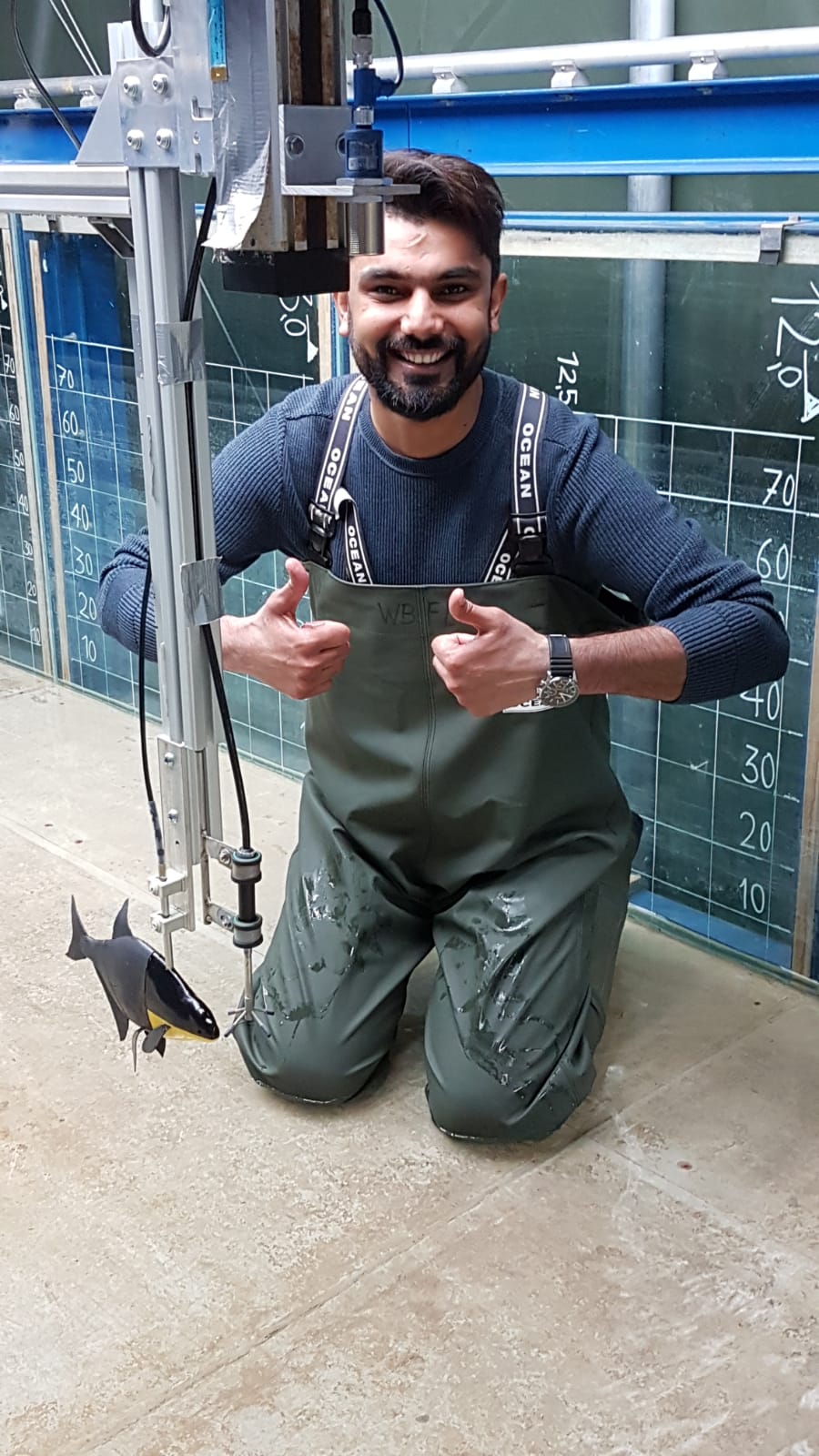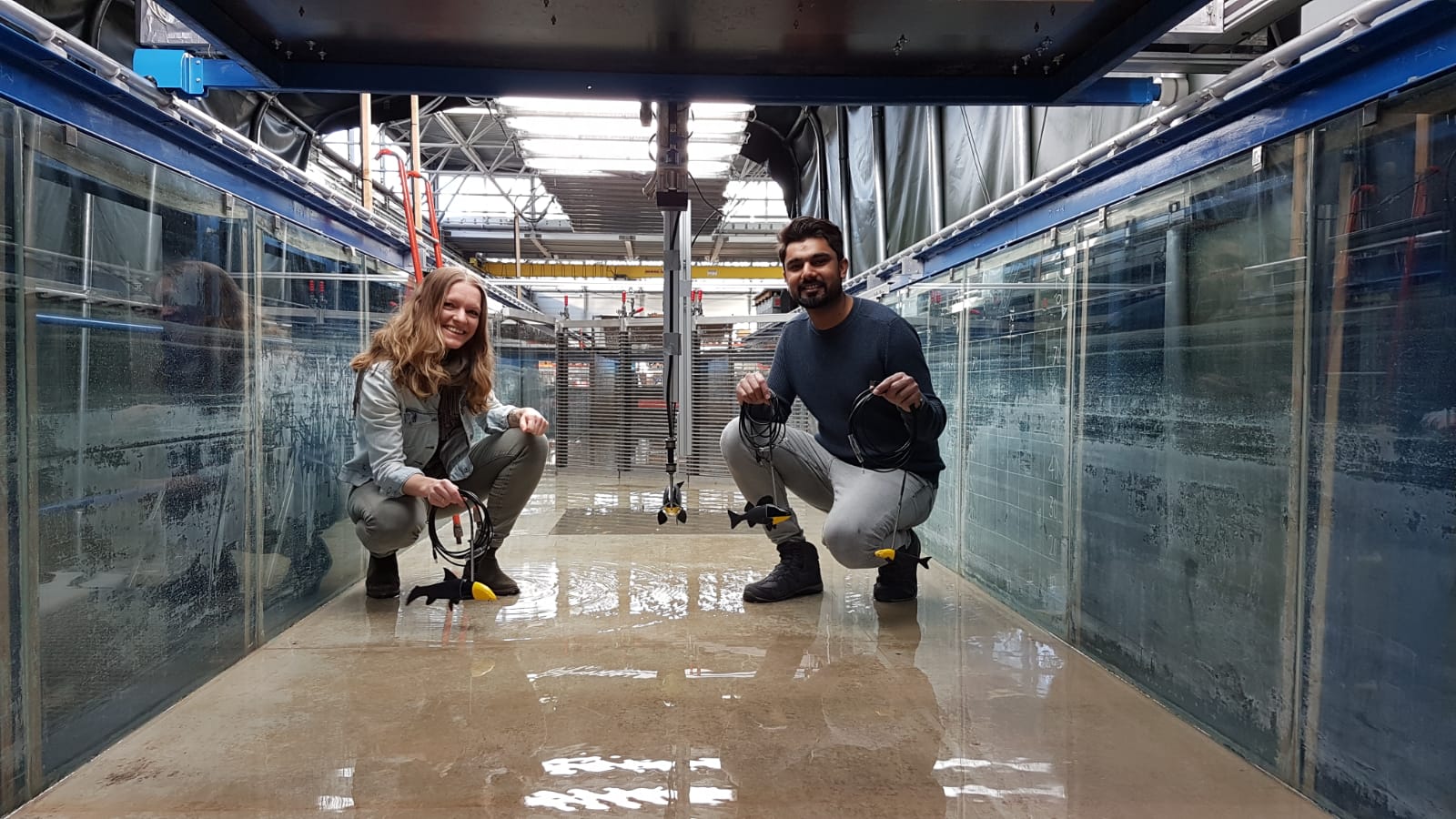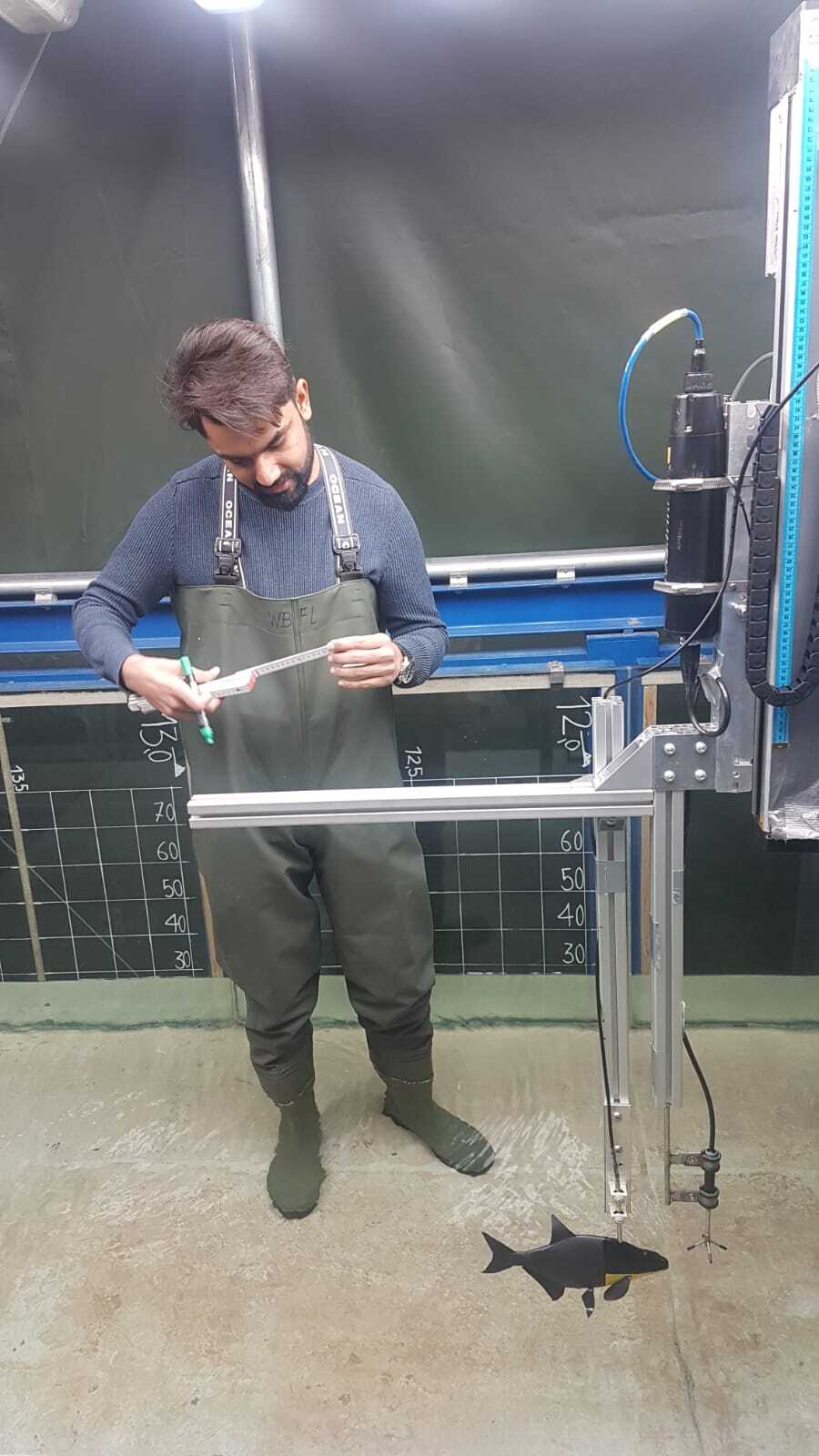The ongoing situation in the world has presented a variety of challenges in various fields. We have found ourselves adjusting to a new reality happening predominantly online. University research has not been an exception. But to what extent is it possible to stick to one's research questions and planned experiments, especially if traveling and meeting others is required for them?
A person who knows the answer to those questions first hand is Ali Hassan Khan, a junior researcher at the Centre for Biorobotics at Tallinn University of Technology, who works under the supervision of Assoc. Prof. Jeffrey Tuhtan, Prof. Maarja Kruusmaa and Dr. Stefan Hoerner (Ottovon-Guericke University Magdeburg, Germany).
(Also see Cecilia Monoli: When nothing goes according to the plan)

Research objective
My research work is a part of the Horizon 2020 Marie Curie project RIver flow regulation, fish BEhavior and Status (RIBES). The major objective of my work is to investigate and simulate turbulent flows around streamlined, fish-shaped bodies in order to create new ways of measuring complex flows in nature.
Intelligent fish
We know that fishes are intelligent vertebrates, they are quite aware of their surroundings due to their excellent visual, acoustic, and hydrodynamic sensing abilities. Unlike other vertebrates, the hydrodynamic sensing ability of fish is quite unique as they possess a type of sensing which we terrestrial vertebrates do not. It is called the lateral line, and it is a special system of sensory organs composed of small pores running along the body. Any changes in the flow, whether caused by an obstacle or prey, are immediately detected by the fish. The lateral line system's anatomy varies considerably between and within species. The extent to which different fish body shapes (morphology) represent adaptations to the hydrodynamic conditions to which fish are exposed is still a point of contention.
Body shape and hydrodynamic signals
While there are many fish species with different lateral line size adaptations for the detection of hydrodynamic signals in distinct behavioral contexts and environments, there is only limited knowledge on how the body shape influences the hydrodynamic sensing around the fish's body. To study this, we are using state-of-the-art numerical simulations based on computational fluid dynamics (CFD) to investigate the spatial distribution of flow field variables that encompass the sensory space around the fish's body using supercomputers. That is what my PhD is about: I investigate the sensory space around different fish species (with different body morphology) using numerical modeling in computational fluid dynamics.
Lab experiments in online times
I began my PhD in September 2020 during the pandemic, but due to the relatively small number of COVID cases at that time in Estonia, I could move to Tallinn and immediately start with my PhD program without any problems. I quickly integrated with my friendly and highly international colleagues at the Centre of Biorobotics. Later on, in January 2021, the university decided to move to online studies. As part of my PhD research, I need to conduct laboratory experiments to physically validate our data from simulations. In February 2021, I was able to travel to Darmstadt, Germany to perform these experiments with my colleague Katherina Bensing, under the support of Prof. Boris Lehmann as part of the DBU funded “MeMo” project (Measurements and Modeling Systems for Fish Passage), where we study both live fish and fish-like sensing. Despite the strict restrictions, and thanks to the teamwork and planning with our colleagues, I spent ten days in quarantine followed up by a test to continue our research activity at TU Darmstadt, which we successfully managed in record time!

Promising outcomes
We tested nine different fish species probes, which are equipped with pressure sensors especially designed and assembled at TalTech, in a huge 40m long flume, along with a high-precision acoustic doppler velocimeter (ADV) to measure the flow. I am very thankful to our passionate and hard-working colleagues from Prof. Lehmann's hydraulics lab at TU Darmstadt, who led these experiments and assured us that despite the pandemic, our common research stayed well on track, and I am very confident that both the RIBES and MeMo projects will have very interesting results, to be published over the next two years.

Takeaways
My main takeaway from doing research during these uncertain times is that if you work in close collaboration with your research partners, there is always some probability of things going wrong, which is beyond your control. But, if you remain passionate and enthusiastic, you will come out better off the other side! I always wanted to adhere to my original research questions firmly, despite the hard times, and I am proud to say that regardless of the difficulties caused by the pandemic, I have managed to do that.
To my fellow TalTech researchers
Stick with it, and frequently discuss problems and solutions with your supervisors and project partners, because together, you can do it!
The research work presented in this article has received funding from the European Union's Horizon 2020 research and innovation program under the Marie Sklodowska-Curie grant agreement No [860800] and ETAg Grant PRG 1243. Experimental work in this paper has been funded in part by the MeMo project, DBU Az. 33867/01–32a.